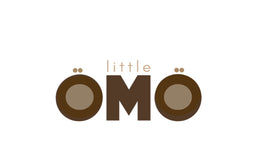9 Engaging Ways To Use Flashcards For Babies, Toddles & Preschoolers

Flashcards depicting body parts can be a remarkable tool for enhancing children's learning experiences. If your child has special needs, disabilities, or childhood disorders or not, these flashcards offer a range of benefits that can aid in their overall development and education. In this blog post, we will explore these advantages and provide additional information to assist parents in making the most of this valuable resource.

For Babies
Body identification: Help toddlers learn the names of body parts by asking them to point to their own body parts as you show them the corresponding flashcard.
Matching game: Create a matching game by placing the flashcards face down and asking toddlers to match a body part flashcard with a stuffed toy or even with their own body to improve their memory and cognitive skills.
Emotion exploration: Use flashcards depicting facial expressions to teach toddlers about different emotions and ask them to imitate the facial expressions shown on the cards to help them develop emotional intelligence.
For Toddlers
Body Part Hunt: Scatter the flashcards around the room and ask your toddler to find and match them to the corresponding body part on their own body. For example, if they pick up a card with a picture of a foot, they should touch their own foot. This interactive game helps reinforce their understanding of body parts.
Simon Says: Play a game of "Simon Says" using the flashcards. You can say, "Simon says, touch your nose" while holding up the nose flashcard. If your toddler follows the command correctly, they get a point. If you say, "Touch your toes" without the corresponding card, they shouldn't do it. This game helps them associate words with actions and body parts.
Storytelling Time: Use the flashcards as inspiration for storytelling. Show a card and ask your toddler to come up with a short story or sentence related to that body part. For example, if you show the hand flashcard, they can say something like, "This hand helps me wave hello." This activity encourages language development and creativity.
For Preschoolers
Body Bingo: Create bingo cards with pictures of various body parts using the flashcards. Call out the names of body parts, and preschoolers can place a marker on the corresponding image on their bingo cards. This game helps reinforce body part recognition and enhances listening skills.
Body Puzzles: Cut the flashcards into several pieces, and let preschoolers assemble the puzzles. They'll need to put the pieces together correctly to reveal the full image of a body part. This activity promotes problem-solving, spatial awareness, and fine motor skills.
Body Part Charades: Play a charades-style game using the flashcards. One child picks a card and acts out the body part without using any words, while the others try to guess which body part it is. This game encourages creativity, non-verbal communication, and social interaction.




